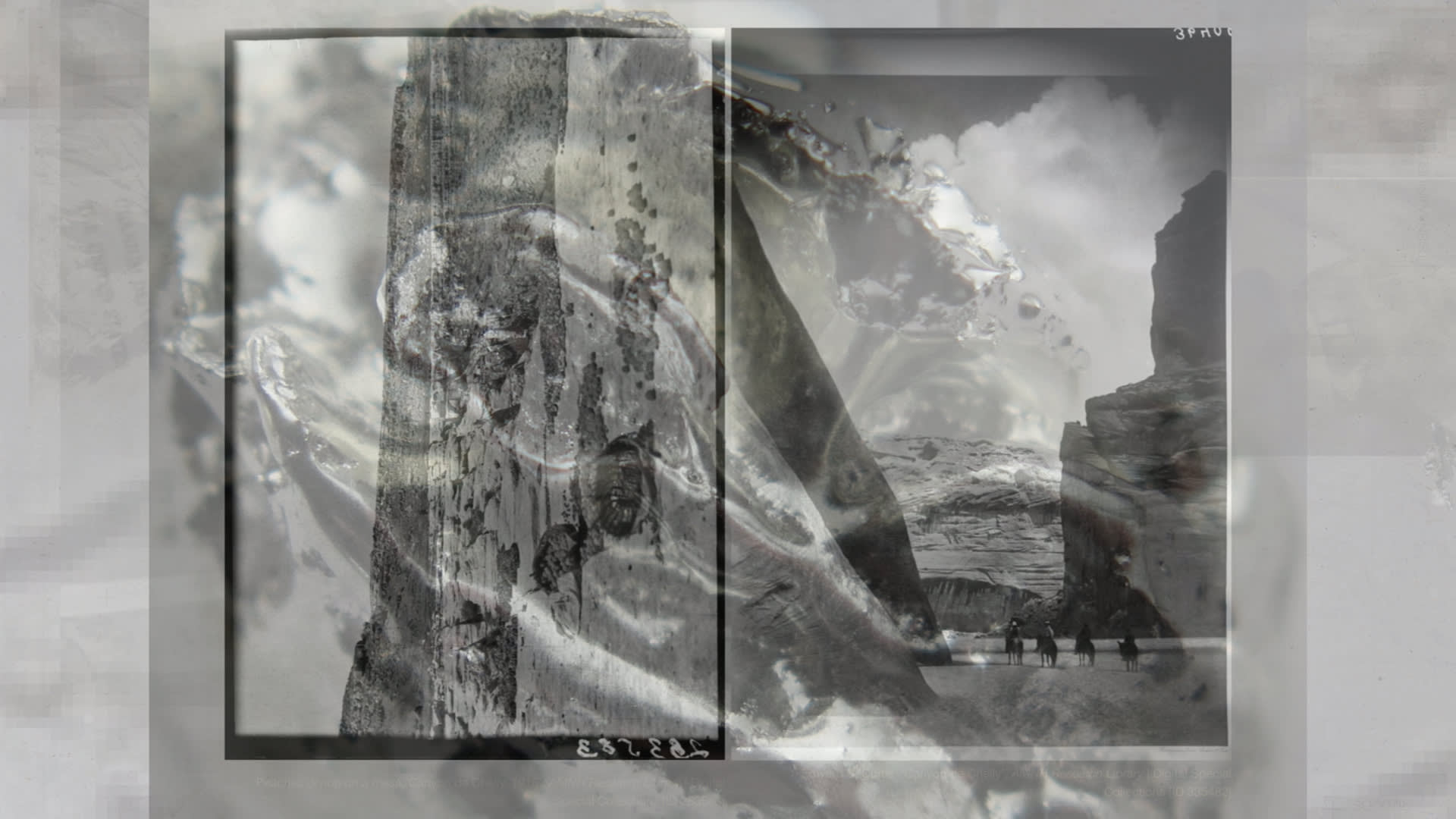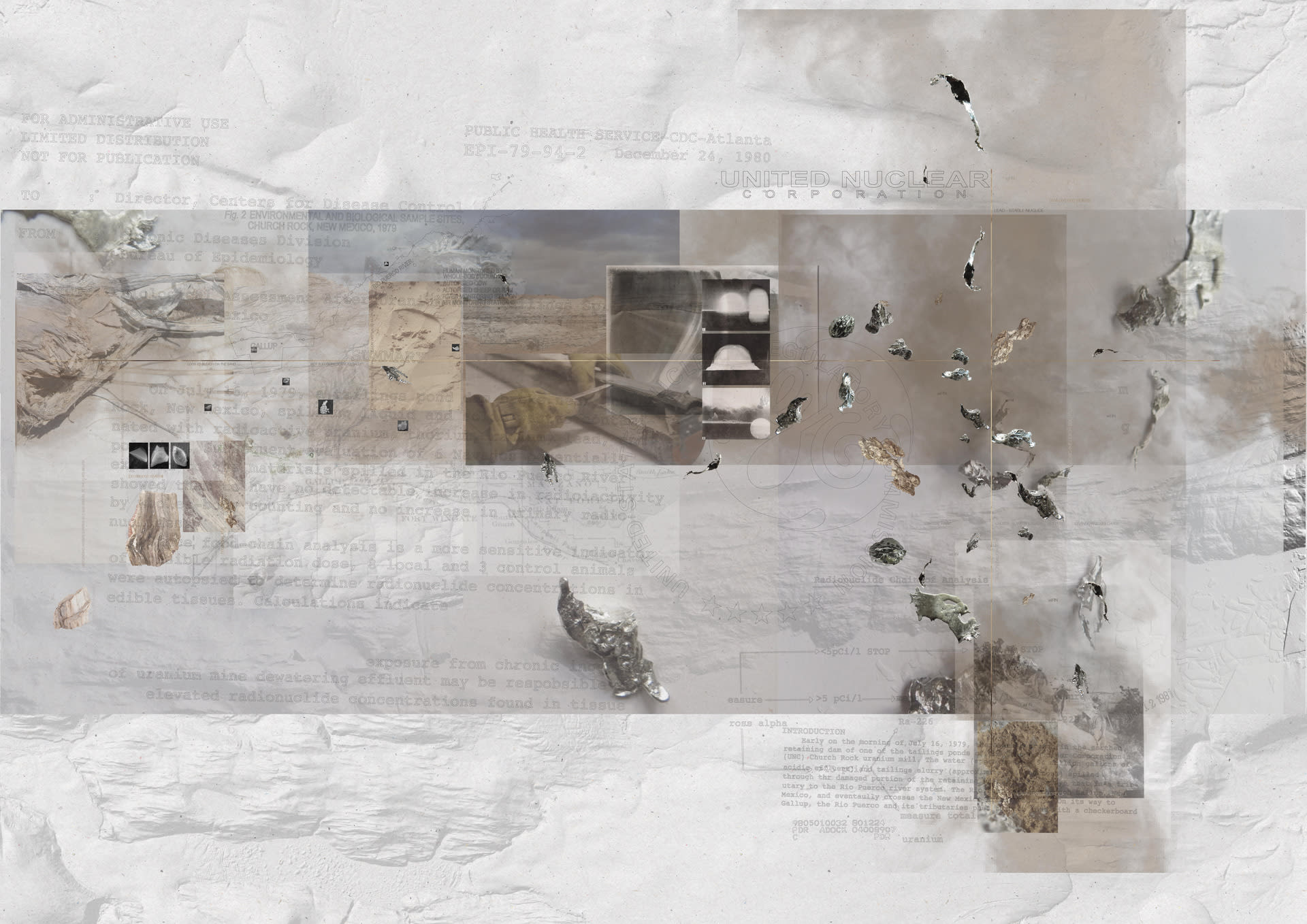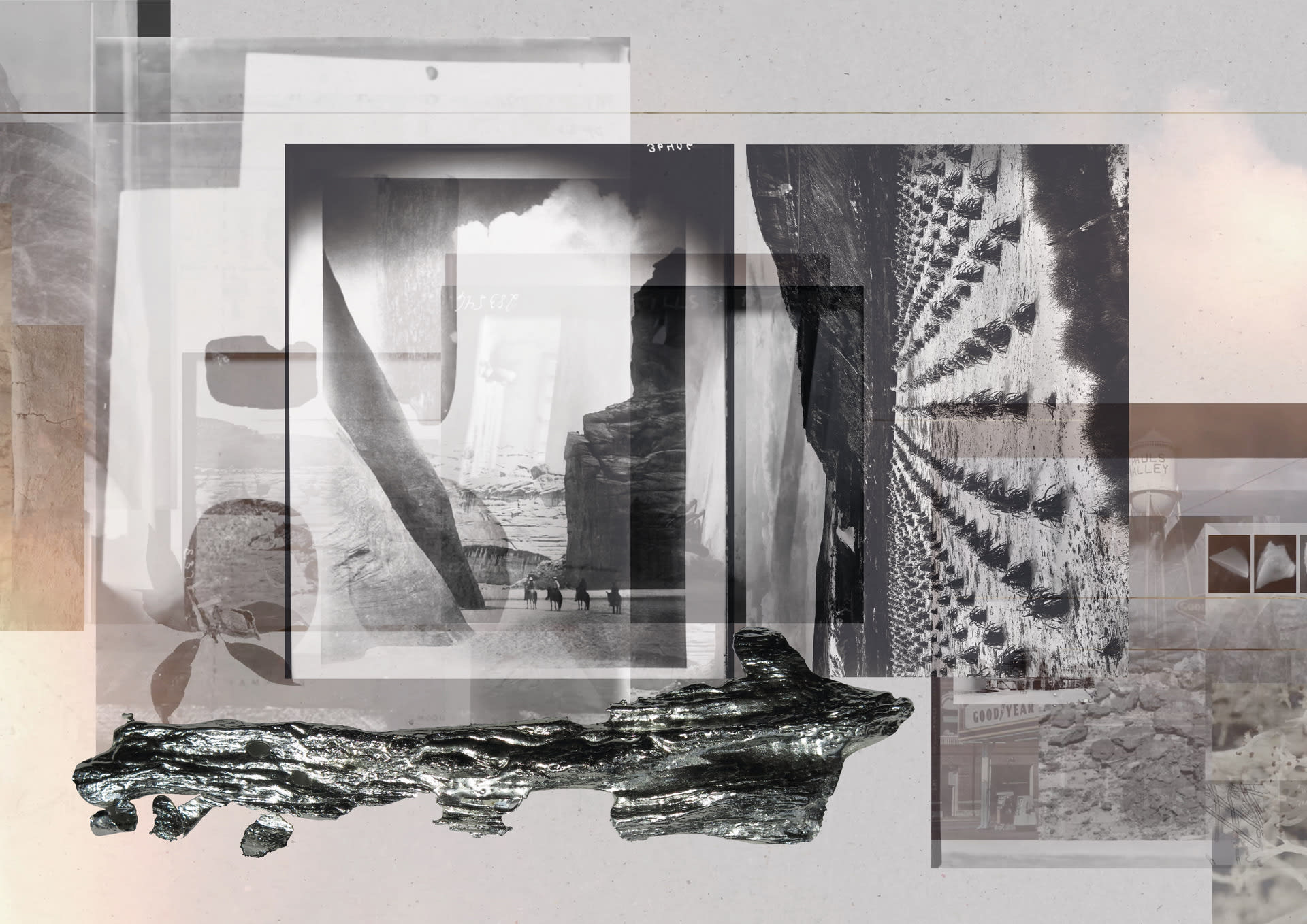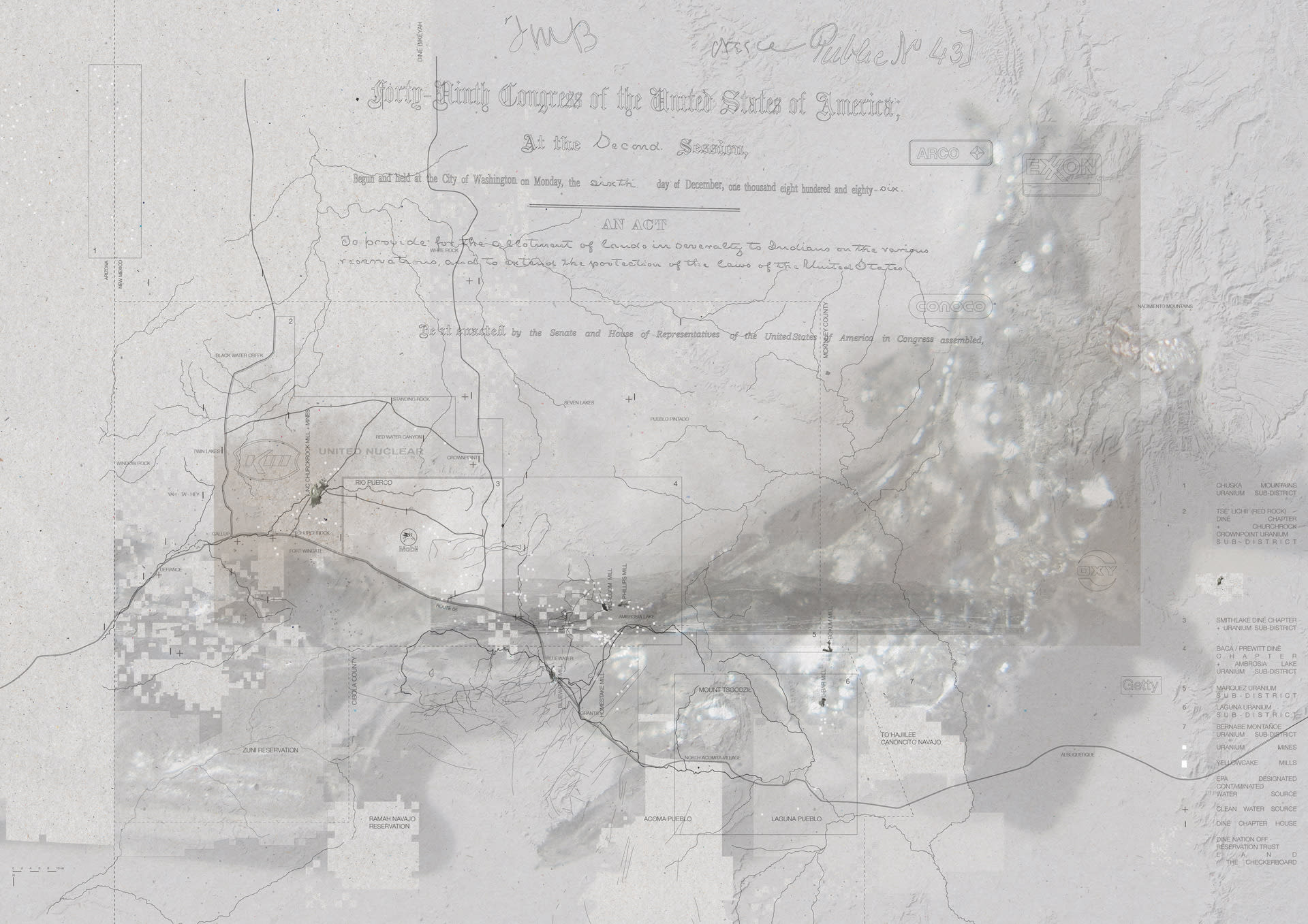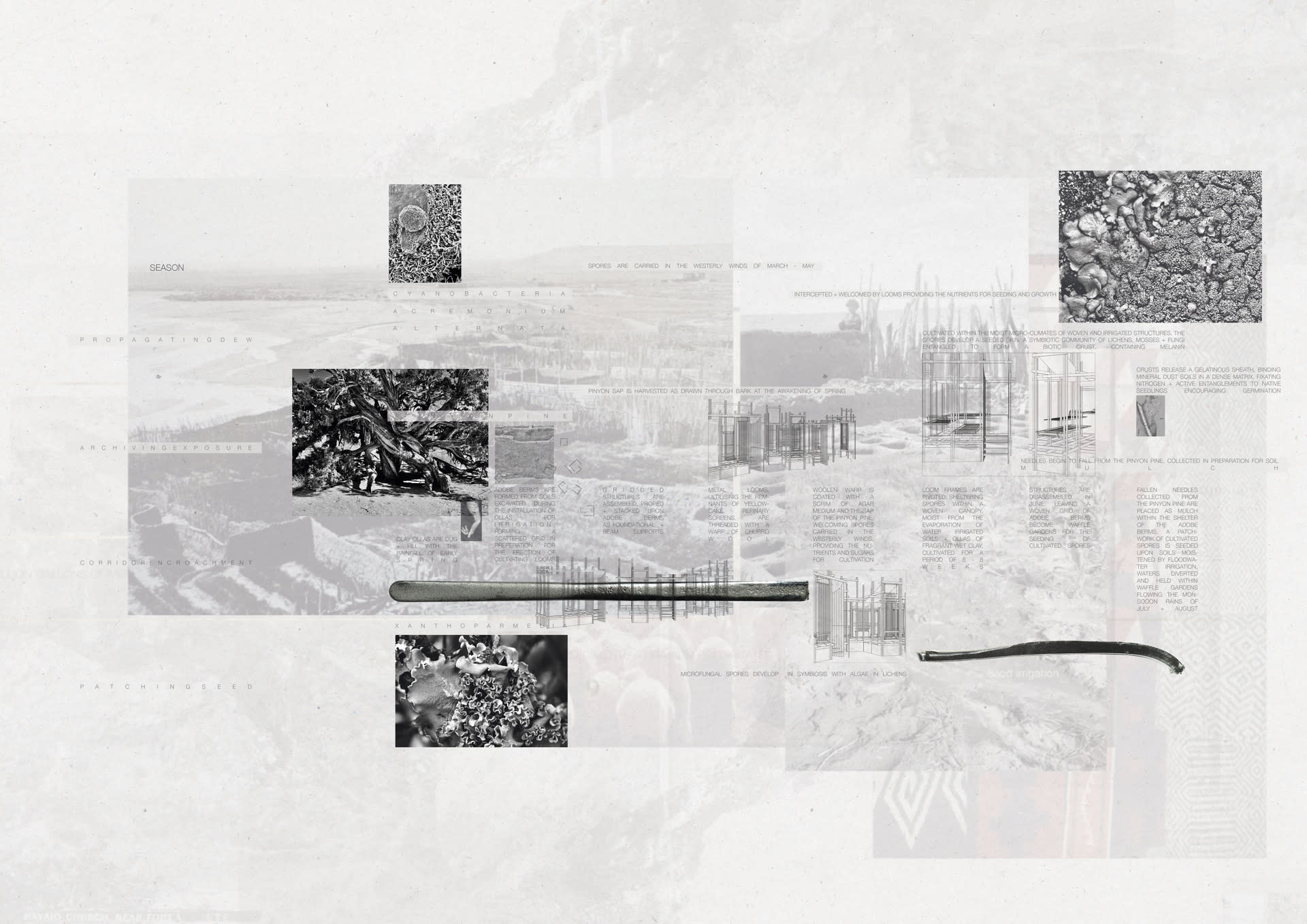Georgia May Jaeckle is a second-year Master of Architecture student at the Royal College of Art and recipient of the Burberry Design Scholarship. Having graduated from The Bartlett, University College London, with First-Class Honors in BSc Architecture, she developed her professional and personal spatial practice whilst working as a Part I Architectural Assistant for design studio Liddicoat & Goldhill. This provided the opportunity to gain a wider understanding of detailed, practical construction practice across all RIBA phases, and to take a critical role on a number of projects including lead designer for the Interpretation Space of the Turner Prize 2019.
Her first year project with ADS7 Transboundary Geo-logics: Politics of the Atmosphere, addressed the climatic disparity between the cluttered and extractive reports of Jesup North Pacific ethnographic expedition of 1897, and the contemporary landscape condition. Between thawed, leached, fresh and salty waters, on the banks of the upper Kolyma river, Siberia, proposing three durational, alchemical landscape interventions revealing landscape as archive and pedagogy.
She received a distinction for her dissertation, ‘Adobe is Political’ Embodied Architecture(s), Cultural Capital & Radical Proximity in Presidio County & la Junta de los Rios, which explored the dynamics of cultural capital and post-industrial economies of culture within Marfa, Texas. Argued to provide a muddied exemplification of extractive, asset based urban development strategies, in which the inherently democratic medium of earth itself has been recast as a fetishised financial resource, fostering inequality, displacement and the dissolution of heritage earthen craft methodologies within the Texas-Mexico borderlands region.
Her final design thesis project Erosion in the Gamma Grass Range, developed with ADS3 seeks to weave a counter narrative of resistance and futurity, following the scarification and removal of 1.4 million tons of uranium mine and yellowcake mill wastes by the Nuclear Regulatory Commission and U.S. Environmental Protection Agency, at Church Rock, New Mexico. Creating a common knowledge forum in which the archival reclamation, future rematriation and collective continuance of this landscape might be collaboratively imagined.
